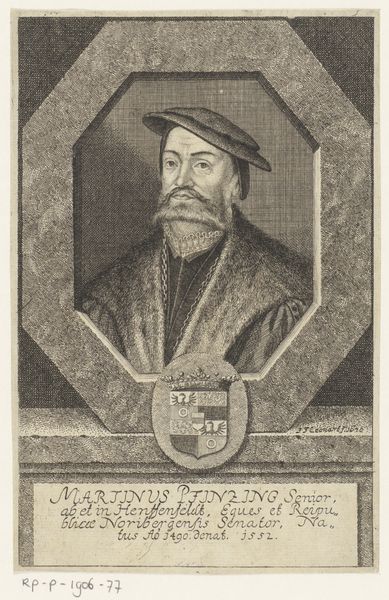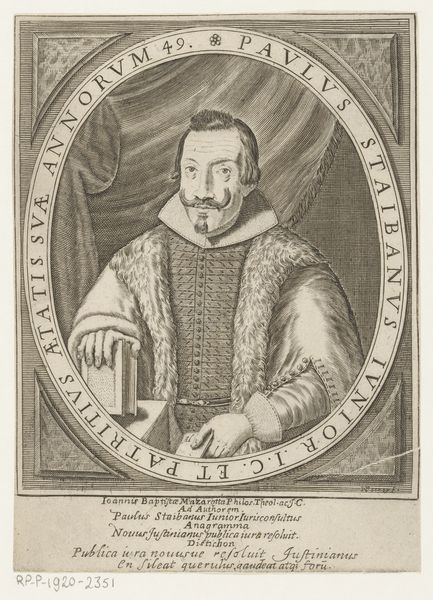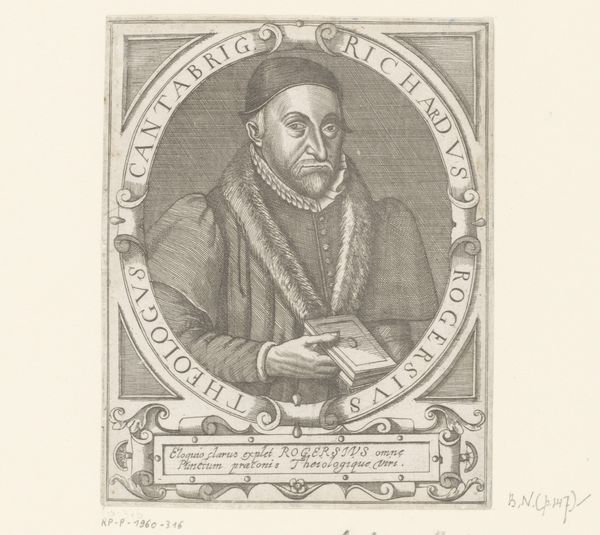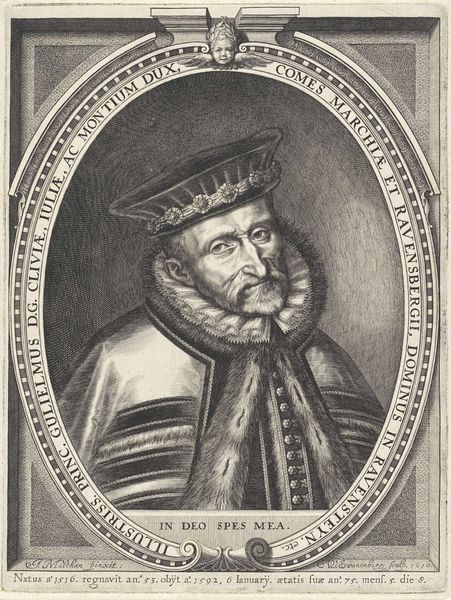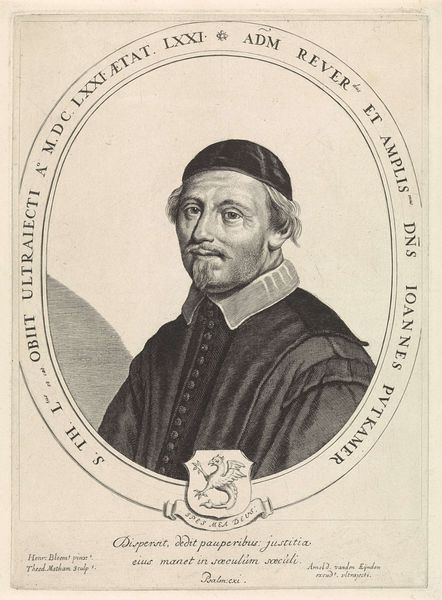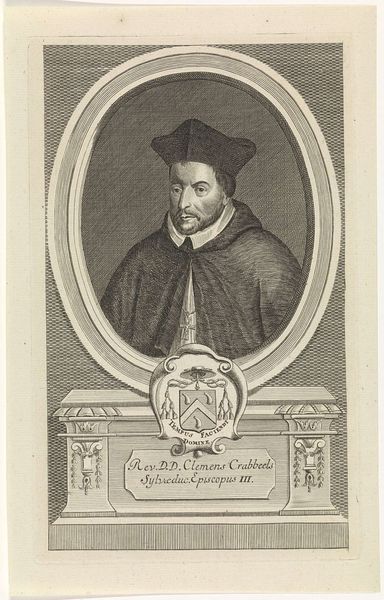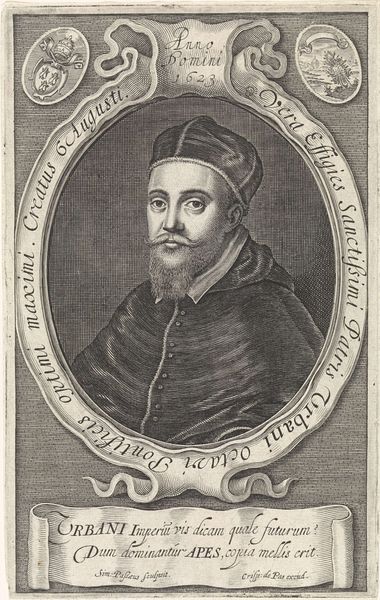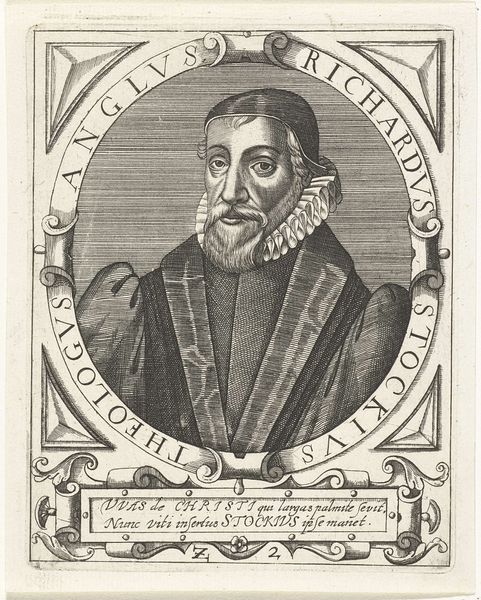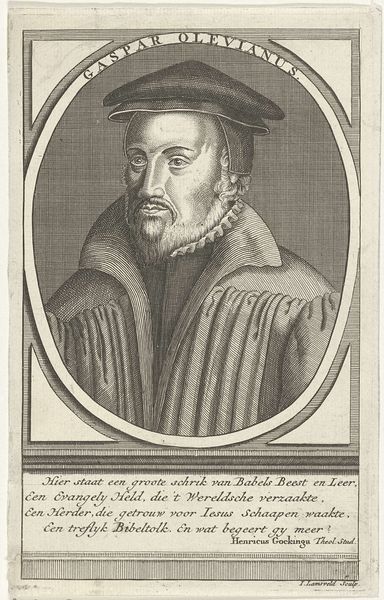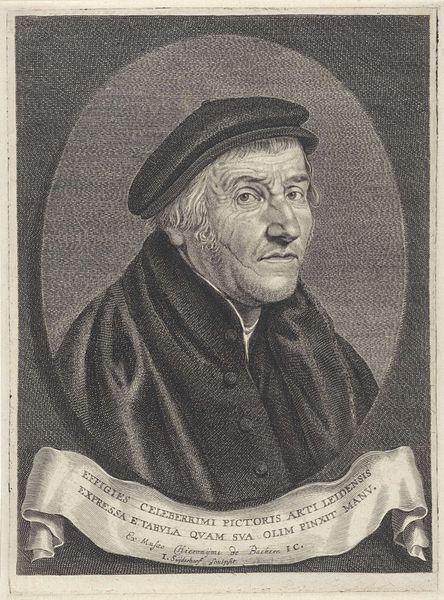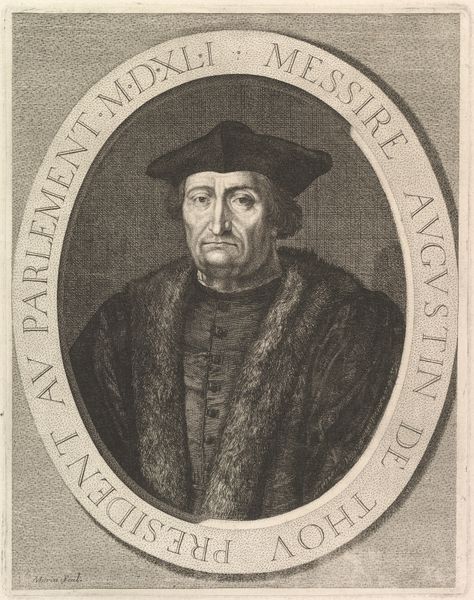
print, etching, engraving
#
portrait
# print
#
etching
#
old engraving style
#
11_renaissance
#
highly detailed
#
history-painting
#
engraving
Dimensions: height 110 mm, width 89 mm
Copyright: Rijks Museum: Open Domain
Curator: Let's turn our attention to Remigius Hogenberg's "Portret van Mathew Parker," an engraving dating back to 1573. Editor: It strikes me as very austere. The limited tonal range amplifies the subject’s rather stern expression. The composition itself feels meticulously planned and controlled. Curator: Indeed. The composition uses the oval frame, adorned with Latin text, to draw the viewer's eye towards Parker's face. Observe the density of the etching lines; they meticulously define form and texture, from the soft folds of his robe to the details of his facial features. Semiotically, the chair, book, bell and hourglass speak to temporal perception. Editor: But consider the historical context. Matthew Parker was the Archbishop of Canterbury during a turbulent period in English history—specifically during the reign of Elizabeth I. The portrait subtly reinforces the power and authority he held. Curator: Precisely. The emblems—his coat of arms displayed in the corners—reinforce status. Note the hourglass placed next to him which emphasizes time and the passage of it, reinforcing the gravity and importance of his position. Editor: Also, the visual language speaks to themes of religious and political consolidation during that era. What is the power being represented and on whose terms? Was he an authoritarian figure enforcing doctrinal conformity, or a reformer attempting to establish a moderate path? The face alone, although detailed, does not convey a sufficient historical understanding. Curator: It could be argued that Hogenberg's intention isn’t to capture subjective feelings but instead to objectively represent the person for posterity, highlighting certain aspects. Editor: It seems this portrait is as much about the symbolism surrounding Parker and his role in the English Reformation, given it can easily be viewed within broader debates concerning power, authority, and religious identity of the time. Curator: A fascinating blend of meticulous detail and historical implications that continue to be appreciated across time. Editor: And yet the debate persists, ensuring the print does not remain frozen in time but can continuously engage with critical and evolving discussions.
Comments
No comments
Be the first to comment and join the conversation on the ultimate creative platform.
